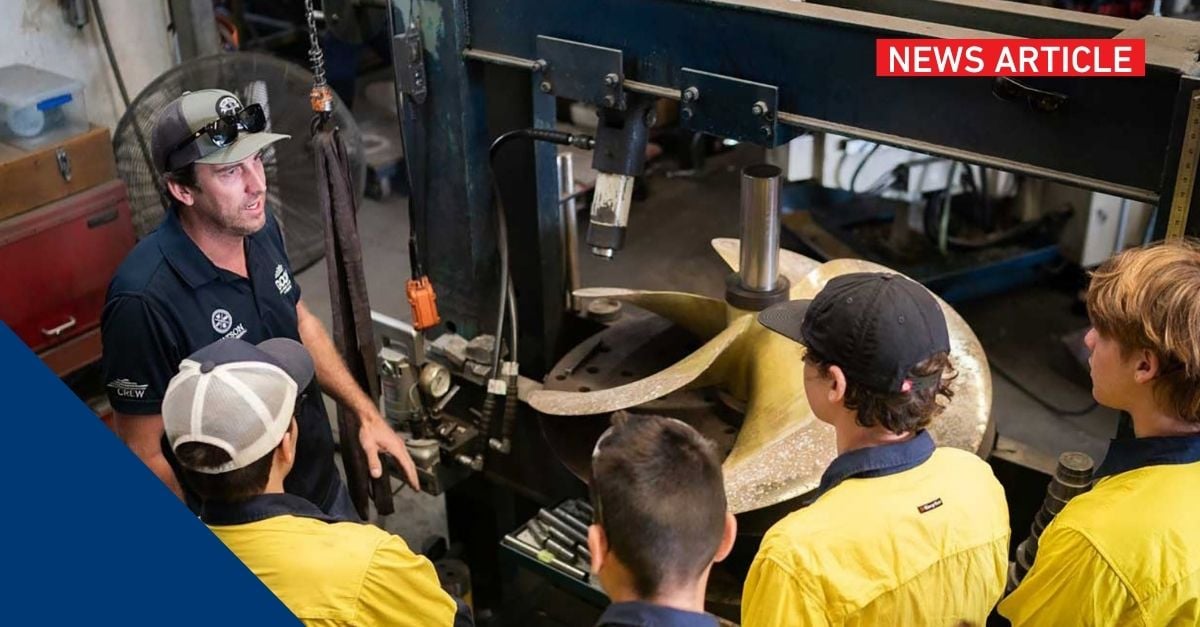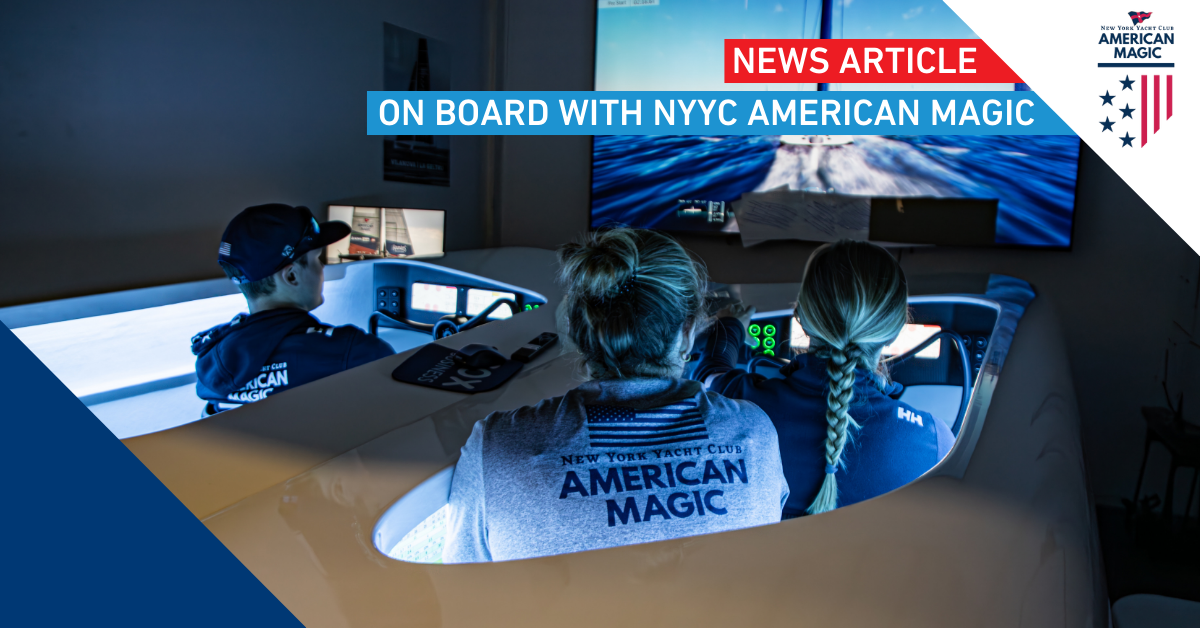Promises and limits to hydrogen
Hydrogen as a power source in yachting is applied in luxury tenders, in stackable generators and in experimental set-ups in yachts. Emitting water from the exhaust pipes, the end use is clean of harmful gasses. Is this going to be the next dominant fuel in leisure transport?
In a membrane fuel cell, hydrogen reacts with oxygen to produce electricity and water. In combustion engines, the highly explosive capacity of hydrogen is used to produce movement. Here too, after the explosive reaction with air it is water – in evaporated form – to be the exhaust pipe emission. H2 to H2O. The basic technology is known and it is applied in a growing number of power generators, from cargo ships to trucks and small boats.
Experimental circumnavigation
Hydrogen yacht propulsion has developed to be a market ready solution. It is surrounded by high-tech sustainability optimism. Hynova yachts has presented their 40 ft. tender ‘New Era’ at the 2021 Monaco Energy Boat Challenge, followed by their production model Hynova 42 at the Cannes boat show a few months later that same year. The French brand of yachts, built at their own yard in La Ciotat, harvests the results from the Energy Observer experimental trimaran, that has circumnavigated while being powered by hydrogen fuel cells. The knowledge gained has resulted in the development of a compact hydrogen powered generator, the REXH2. This acronym of Range Extender H2 is the name of device that fits into one cubic meter and is presented together with partner Toyota to be a range extender for electric vehicles. Together with a battery pack, the REXH2 is the source of electric power in the Hynova yachts . It was also installed in the zero-emission version of the Fountaine Pajot catamaran model Samana 59. Battery powered electric yachts with hydrogen for extended range and redundancy are in the market attracting buyers that can afford it and have faith in hydrogen as a future fuel.
Accelerator
In these early stages of adaptation of hydrogen as a propulsion fuel, special projects were initiated to demonstrate the sustainable potential of the new energy carrier. On board the 70 foot sailing yacht ‘Ecolution’, the electricity needed to get into harbours with the electric propulsion and to power the household functions, is normally generated by the propellers. These function as a water turbine when the yacht is sailing. The electricity is stored in large batteries. In efforts to make Ecolution the flagship of the energy transition in the northern part of the Netherlands, yard owner Albert Keizer of Next Generation Shipyards has taken out the diesel generators that the yacht had for redundancy and replaced them with hydrogen fuel cells. All functions well. Yet, the accelerating effect of the novel electricity generation was diminished in the wake of the covid pandemic.
Carrier
Two hydrogen protons and one oxygen combine into water molecules: H2O. Hydrogen is the most common chemical element in the world. The fuel can be derived from water by electrolysis: electricity is used to make a fuel that can then be used to generate electricity. About 30 percent of the energy is lost in the process. The upside is that hydrogen can be stored and transported to be used where the electricity is needed. This makes hydrogen not really a fuel, but an energy carrier. If it is produced using electricity that came from a fossil fuel powered electricity plant, it can not be considered a zero emission power source. When hydrogen is made by electrolysis using electricity from wind- and solar plants, it is a carrier to store this green energy. Production can even solve the problem of excess power on sunny and windy days. The extra capacity generated can be used to make hydrogen and carry the power until it may be needed somewhere or in case of dark days with no wind.
Big high-pressure tank
This way, hydrogen as an energy carrier can provide for zero pollution propulsion. But will it? Downsides are storage of hydrogen itself. It is highly explosive. When fluid, it must be stored at 263 degrees below zero or it will evaporate. High pressure tanks and connections are necessary, at 350 of 700 bar. And hydrogen takes about seven times the volume of diesel for the same amount of energy. A giant tank at 700 bar is a serious consideration aboard your yacht.
Big ships
Hyundai Heavy Industries and Japan Engine Company have invested in development of hydrogen combustion engines. Meanwhile other engine manufacturers in the maritime industry have investigated other options. “At this time, we consider methanol to be the most viable fuel for sustainable ship operations,” says Pricipal Research Engineer Erik-Jan Boonen of Damen Shipyards Group. “Methanol can be easily produced in large quantities and requires not so much energy for production. It is fluid at normal temperatures and takes only 130 percent of the volume of diesel. “
Methanol fuel cells
Superyacht yard Lürssen from Germany is constructing the first hydrogen powered superyacht, to be launched 2025. This yacht will be generating its own hydrogen, using methanol as a catalyst. Fluid methanol is in the tanks, then transformed into hydrogen by a chemical process, the hydrogen will then create electricity in a membrane fuel cell. This will supply propulsion power and household electricity. For practicality, also Lürssen has chosen for methanol. In the market of smaller yachts, a Nexus Revo 870 Cabrio is engineerded to be equipped with a fuel cell range extender and electric propulsion. This is done by Dutch importer Natural Yachts. The range extending fuel cell is running on methanol, not hydrogen. “It is really hard to get legislative approval for the use of hydrogen on board,” Natural Yachts director Jurjen Poorting explains. “Methanol fuel cell technology is not very different from the process with hydrogen. But we do not have the high-pressure, extremely low temperature storage problems. If a client persists on the use of hydrogen in the fuel cell, we can make it, but it will take a lot of paperwork to get this approved on a yacht.” As is often the case, jurisdiction is behind on innovation.
Practical
In the lion’s den of the World Hydrogen Congress, October 12 in Rotterdam, Michael Liebreich argued that hydrogen will possibly not be the leading energy carrier to power the transition to zero emissions. Liebreich is founder of the Bloomberg New Energy Forum and member of various advisory boards on energy transition. “Entrepeneurs and consumers tend to look for and find practical and economically viable solutions.” If national governments and international companies think that hydrogen is the best answer, they need to consider some issues. It will take the 60 percent of Germany’s wind and solar power production to produce the amount of hydrogen needed to replace the fossil fuels of the steel industry. And then this is only the steel industry. “Other fuels and power carriers will surface that answer the need for zero emission propulsion more efficiently,” Liebreich argues.
Mix
Where hydrogen as a power source has evolved from experiment to market ready application amazingly fast, the limits of this energy carrier come to attention. The swift adaptation for producers and even end users of the new fuel is promising. It show that introduction of new fuels can be done at great speed. A mixture of fit-for-purpose zero emission power sources may emerge.
Share your stories on leisure marine industry with us
Do you have an innovation, research results or an other interesting topic you would like to share with the leisure marine equipment industry? The METSTRADE website and social media channels are a great platform to showcase your stories! Let us know via metstrade@rai.nl
Are you a METSTRADE exhibitor?
Make sure you add your latest press releases to your Company Profile in the Exhibitor Portal for free exposure.






